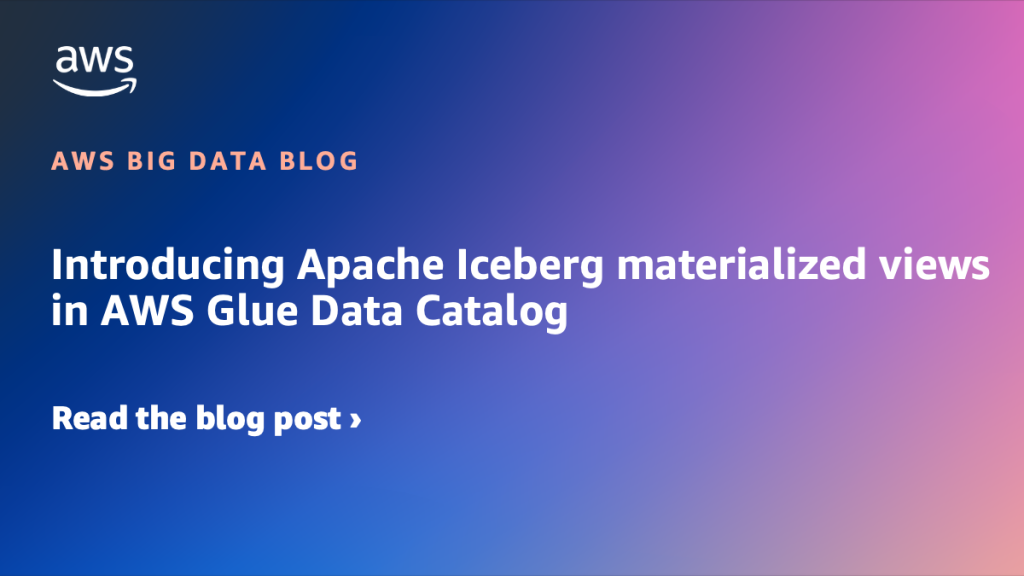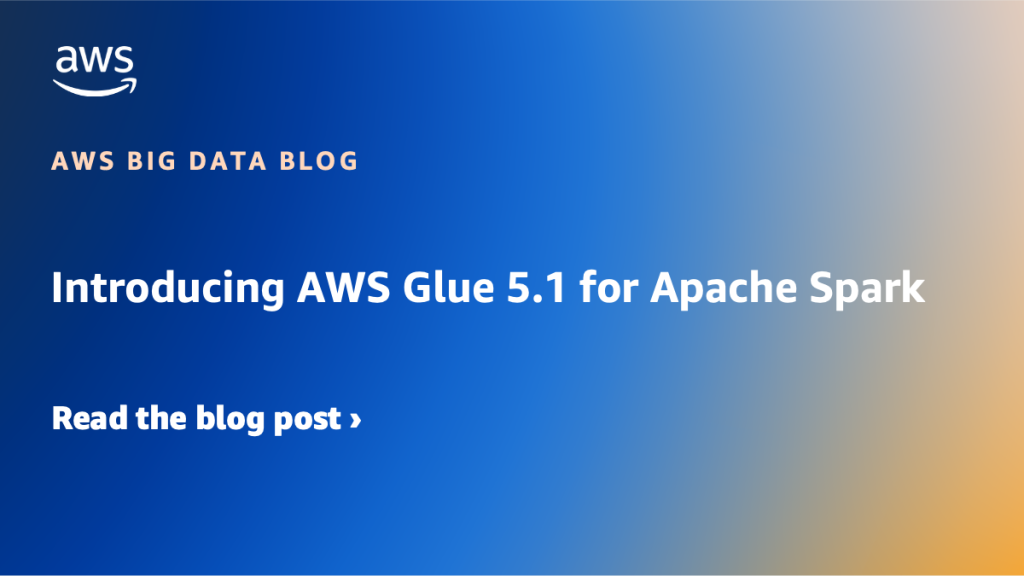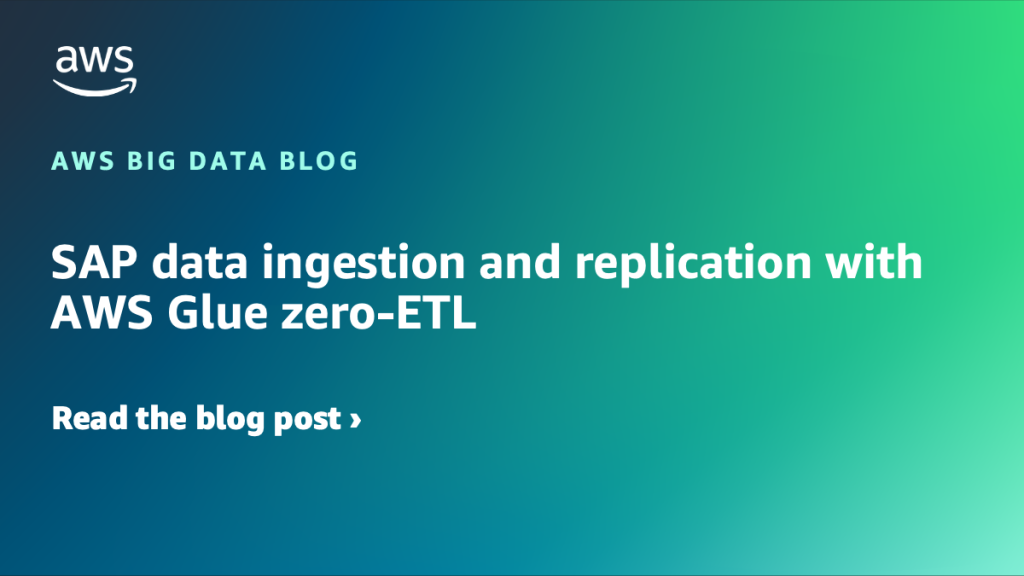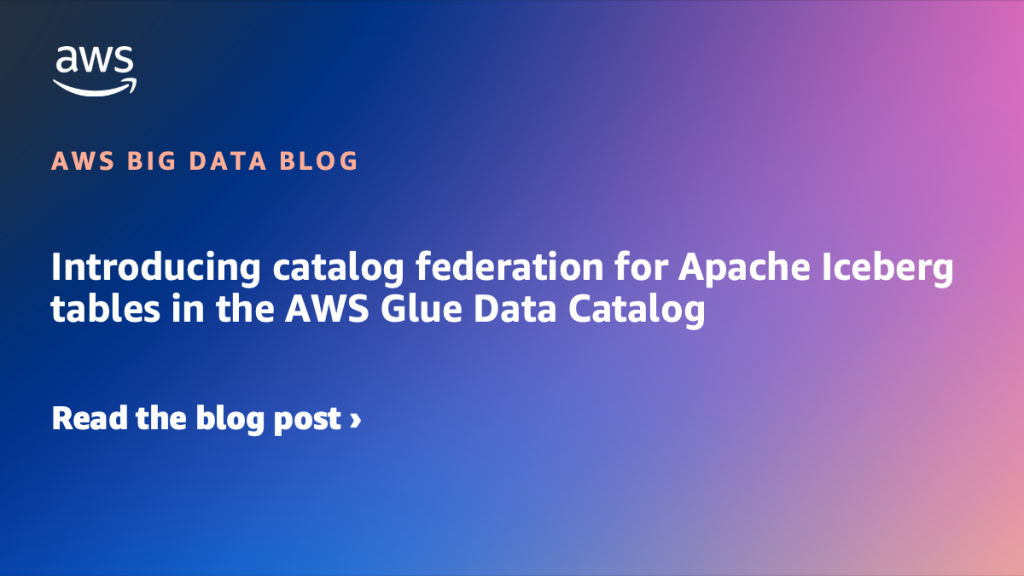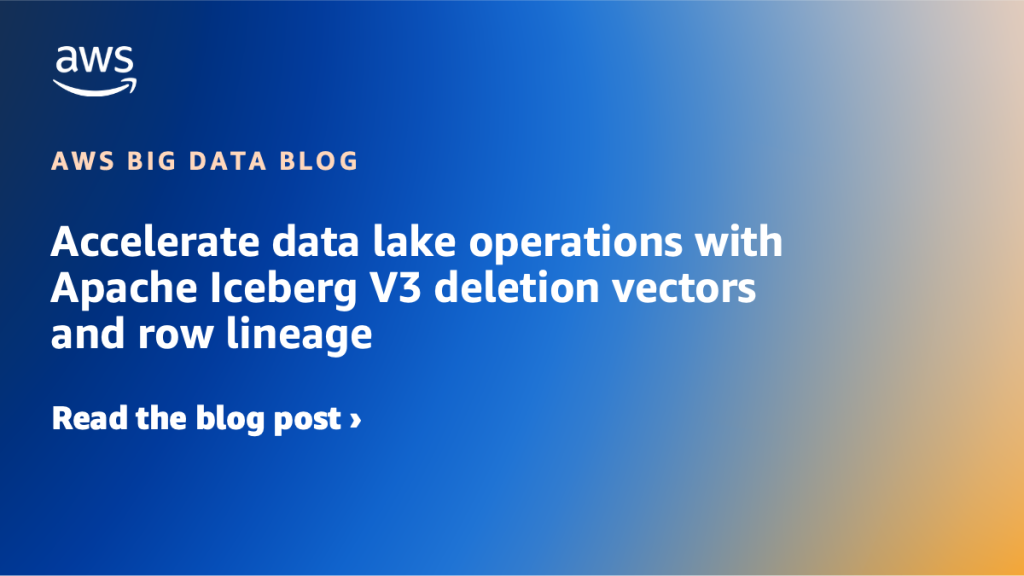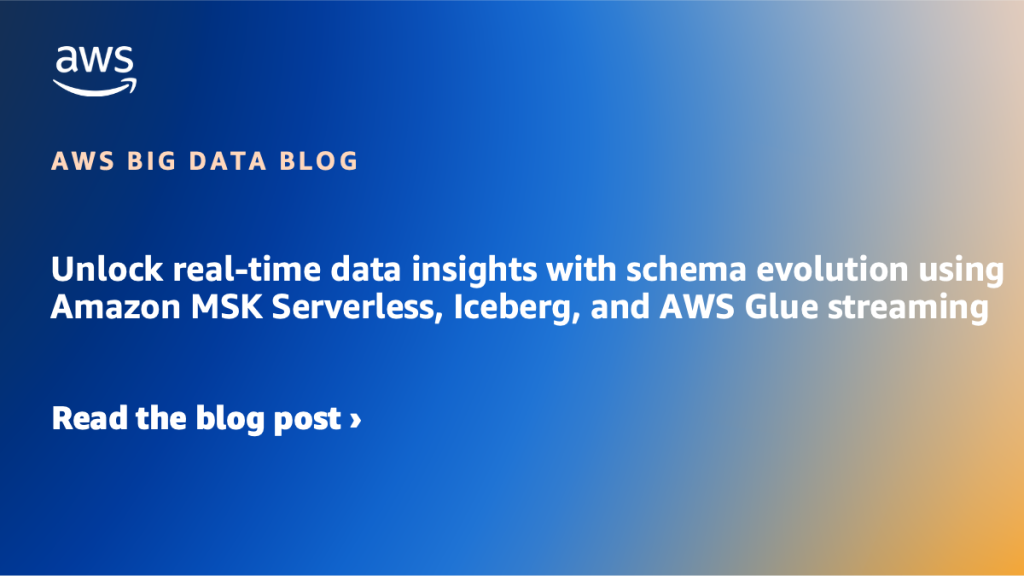AWS Big Data Blog
Category: AWS Glue
Create and update Apache Iceberg tables with partitions in the AWS Glue Data Catalog using the AWS SDK and AWS CloudFormation
In this post, we show how to create and update Iceberg tables with partitions in the Data Catalog using the AWS SDK and AWS CloudFormation.
Introducing the Apache Spark troubleshooting agent for Amazon EMR and AWS Glue
In this post, we show you how the Apache Spark troubleshooting agent helps analyze Apache Spark issues by providing detailed root causes and actionable recommendations. You’ll learn how to streamline your troubleshooting workflow by integrating this agent with your existing monitoring solutions across Amazon EMR and AWS Glue.
Introducing Apache Iceberg materialized views in AWS Glue Data Catalog
Hundreds of thousands of customers build artificial intelligence and machine learning (AI/ML) and analytics applications on AWS, frequently transforming data through multiple stages for improved query performance—from raw data to processed datasets to final analytical tables. Data engineers must solve complex problems, including detecting what data has changed in base tables, writing and maintaining transformation […]
Introducing AWS Glue 5.1 for Apache Spark
AWS recently announced Glue 5.1, a new version of AWS Glue that accelerates data integration workloads in AWS. AWS Glue 5.1 upgrades the Spark engines to Apache Spark 3.5.6, giving you newer Spark release along with the newer dependent libraries so you can develop, run, and scale your data integration workloads and get insights faster. In this post, we describe what’s new in AWS Glue 5.1, key highlights on Spark and related libraries, and how to get started on AWS Glue 5.1.
SAP data ingestion and replication with AWS Glue zero-ETL
AWS Glue zero-ETL with SAP now supports data ingestion and replication from SAP data sources such as Operational Data Provisioning (ODP) managed SAP Business Warehouse (BW) extractors, Advanced Business Application Programming (ABAP), Core Data Services (CDS) views, and other non-ODP data sources. Zero-ETL data replication and schema synchronization writes extracted data to AWS services like Amazon Redshift, Amazon SageMaker lakehouse, and Amazon S3 Tables, alleviating the need for manual pipeline development. In this post, we show how to create and monitor a zero-ETL integration with various ODP and non-ODP SAP sources.
Medidata’s journey to a modern lakehouse architecture on AWS
In this post, we show you how Medidata created a unified, scalable, real-time data platform that serves thousands of clinical trials worldwide with AWS services, Apache Iceberg, and a modern lakehouse architecture.
Introducing catalog federation for Apache Iceberg tables in the AWS Glue Data Catalog
AWS Glue now supports catalog federation for remote Iceberg tables in the Data Catalog. With catalog federation, you can query remote Iceberg tables, stored in Amazon S3 and cataloged in remote Iceberg catalogs, using AWS analytics engines and without moving or duplicating tables. In this post, we discuss how to get started with catalog federation for Iceberg tables in the Data Catalog.
Accelerate data lake operations with Apache Iceberg V3 deletion vectors and row lineage
In this post, we walk you through the new capabilities in Iceberg V3, explain how deletion vectors and row lineage address these challenges, explore real-world use cases across industries, and provide practical guidance on implementing Iceberg V3 features across AWS analytics, catalog, and storage services.
Scaling data governance with Amazon DataZone: Covestro success story
In this post, we show you how Covestro transformed its data architecture by implementing Amazon DataZone and AWS Serverless Data Lake Framework, transitioning from a centralized data lake to a data mesh architecture. The implementation enabled streamlined data access, better data quality, and stronger governance at scale, achieving a 70% reduction in time-to-market for over 1,000 data pipelines.
Unlock real-time data insights with schema evolution using Amazon MSK Serverless, Iceberg, and AWS Glue streaming
This post showcases a solution that businesses can use to access real-time data insights without the traditional delays between data creation and analysis. By combining Amazon MSK Serverless, Debezium MySQL connector, AWS Glue streaming, and Apache Iceberg tables, the architecture captures database changes instantly and makes them immediately available for analytics through Amazon Athena. A standout feature is the system’s ability to automatically adapt when database structures change—such as adding new columns—without disrupting operations or requiring manual intervention.


